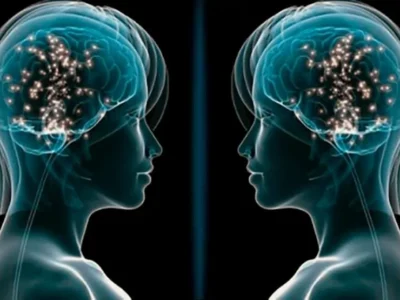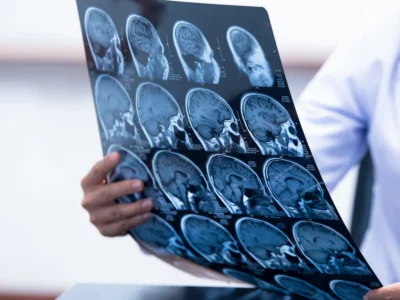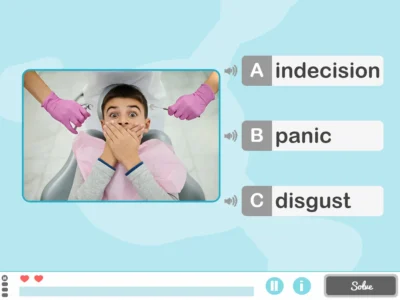Mónica Nieves, neuropsychologist and director of the Fundació Esclerosi Múltiple (FEM), explains in this article how the foundation’s neurorehabilitation centers approach hybrid treatments by combining in-person care with telerehabilitation.
Introduction
Following the impact that the lockdown had on health during the global pandemic of 2020 (1) and the progressive and adaptive process of changes in the treatments that could be offered, neurorehabilitation is undergoing an evolution in terms of methodology.
Today, after these four years of learning and experience, the needs of people with neuroprogressive diseases, as well as the way they want to be cared for, are different than before the pandemic.
The Fundació Esclerosi Múltiple (FEM) as a neurorehabilitation center
The Fundació Esclerosi Múltiple (FEM) has neurorehabilitation centers in Barcelona, Reus and Lleida, whose mission is to care for and support people with multiple sclerosis or other neurodegenerative diseases (Parkinson’s, ataxias, ALS…).
In these centers, all the technical, human, material and methodological means that may contribute to promoting social integration and personal autonomy are made available to those served. We are committed to a comprehensive and global care model and to neurorehabilitation to reduce the impact of the disease on quality of life.
At FEM, after the experience gained with the remote treatments offered during the lockdown, we have redesigned a hybrid model of care for various therapies.
How hybrid treatments improve neurorehabilitation after the pandemic
This process of adapting services, adding online treatments to increase effectiveness, efficiency and user adherence to them, is supported by scientific evidence.
Home telerehabilitation (TRHB) is a complement to that provided in the centers, allowing remote supervision and the removal of barriers, in a context where functional and social barriers are the most common reasons why people fail to be consistent with rehabilitative treatments.
In addition, TRHB provides both affected people and their family members and caregivers greater support both in care and in mobility and access to these services. Furthermore, according to the World Health Organization (WHO), this type of care improves access to the health system.
It is important to emphasize that, the goal of TRHB is not to replace in-person rehabilitation (RHB) in any case. Its ultimate purpose is to bring health resources closer to people by monitoring less complex cases, offering RHB to people with a lower degree of impairment, intensifying rehabilitation and promoting educational and preventive activities.

Subscribe
to our
Newsletter
Benefits of cognitive telerehabilitation in neuropsychology
Several studies on telerehabilitation (TRHB) have demonstrated benefits in functional recovery (pain, mobility and strengthening) of those affected, as well as in the acceptance of treatment by these people and accessibility to it.
In the specific case of people affected by multiple sclerosis (MS), evidence shows that TRHB can be used as an alternative to conventional rehabilitation methods to improve gait, balance or cognitive performance, producing a significant impact on memory and language.
The role of NeuronUP2GO in cognition and the FEM hybrid model
Regarding cognitive treatment, at the foundation we have been able to combine in-person sessions with telerehabilitation sessions thanks to the NeuronUP cognitive stimulation platform.
Specifically, the NeuronUP2GO resource has allowed us to increase the number of weekly sessions and the variability of treatments, increasing their effectiveness as well as the motivation and adherence of all users.
An example of a hybrid cognitive treatment
Below, we present a neuropsychological treatment we have designed for people with mild to moderate cognitive impairment that combines in-person sessions and online sessions.
Who it is aimed at
It is aimed at people diagnosed with multiple sclerosis (MS) or other neuroprogressive diseases who have noticed a decline in their cognitive performance in daily activities.
Treatment objectives
The program aims to establish healthy brain habits and strengthen vulnerable cognitive functions through training and the teaching of compensatory techniques and strategies.
What this hybrid cognitive treatment consists of
Group compensatory strategies therapy
Group compensatory strategies therapy is carried out in person in order to also enhance the social and communicative function of the affected people.
The treatment consists of 12 sessions of 60 minutes, organized with small groups of 6 people. During these sessions, activities focused on keeping the mind active are carried out, and strategies are shown to improve cognitive performance in daily life and minimize errors. Health education is also provided to offer information on environmental, social and emotional factors that affect cognitive development.
Online sessions with NeuronUP
Thanks to the use of NeuronUP, FEM professionals design online cognitive rehabilitation sessions in order to work with users on the altered cognitive functions and the appropriate degree of impairment.
These telerehabilitation sessions are carried out with a frequency of 2-3 sessions per week, and their duration varies between 30-45 minutes depending on each case. For example, the duration may be altered when cognitive fatigue or a large alteration of sustained attention is detected.
Individual neuropsychological rehabilitation therapies
Individual neuropsychological rehabilitation therapies are conducted in person and are focused on:
- Reviewing the sessions carried out online.
- Agreeing on new activities and their execution times: An important aspect aimed at alleviating the effects of cognitive fatigue and thus increasing adherence to the treatment.
- Working on the target function, that is, the one the particular user believes is interfering most with their daily life. An example of this would be not being able to read a book because they cannot concentrate. In this case, sustained attention would need to be worked on.
Conclusion
In summary, telerehabilitation (TRHB) is a useful and effective tool in neurorehabilitation, responding to the specific needs of users.
Currently, we are studying other treatments that we can offer in this format and from other services of the neurorehabilitation center, such as physiotherapy, speech therapy and psychology.
Bibliography
- Bove R, Bevan C, Crabtree E et al. Toward a low-cost, in-home, telemedicine-enabled assessment of disability in multiple sclerosis. Mult Scler . 2019;25(11):1526–1534. doi: 10.1177/1352458518793527.
- Chen J, Sun D, Zhang S, Shi Y, Qiao F, Zhou Y, Liu J, Ren C. Effects of home-based telerehabilitation in patients with stroke: A randomized controlled trial. Neurology. 2020 Oct 27;95(17):e2318-e2330. doi: 10.1212/WNL.0000000000010821. Epub 2020 Sep 30. PMID: 32999058.
- Doherty F, Powell P, McBride C, Monaghan K. Physical Telerehabilitation interventions for Gait and balance in Multiple sclerosis: A Scoping review. J Neurol Sci. 2024 Jan 15; 456:122827. doi: 10.1016/j.jns.2023.122827. Epub 2023 Dec 7. PMID: 38134564.
- Ezpeleta et al. Manual of telemedicine in neurology. Working Group on telemedicine and neurology of the SEN. May 2022
- Landi D, Ponzano M, Nicoletti CG et al. Patient’s point of view on the use of telemedicine in multiple sclerosis: a web-based survey. Neurol Sci . 2022;43(2):1197–1205. doi: 10.1007/s10072-021-05398-6.
- Nousia A, Pappa E, Siokas V, Liampas I, Tsouris Z, Messinis L, Patrikelis P, Manouilidou C, Dardiotis E, Nasios G. Evaluation of the Efficacy and Feasibility of a Telerehabilitation Program Using Language and Cognitive Exercises in Multi-Domain Amnestic Mild Cognitive Impairment. Arch Clin Neuropsychol. 2023 Feb 18;38(2):224-235. doi: 10.1093/arclin/acac078. PMID: 36156732.
- Zabay C, Nieves M et al. Evaluation of the impact of confinement on the health and lifestyle of service users of the neurorehabilitation centers of Lleida and Reus of the Fundació Esclerosi Múltiple. Rev Neurol 2021; 73: 249-57. doi: 10.33588/ rn.7307.2020640.
- Xiang XM, Bernard J. Telehealth in multiple sclerosis clinical care and research. Curr Neurol Neurosci Rep . 2021;21(4):14. doi: 10.1007/s11910-021-01103-4.
If you liked this blog post about innovation in neurorehabilitation: The combination of in-person and online sessions in a neurorehabilitation center, you will surely be interested in these NeuronUP articles:
“This article has been translated. Link to the original article in Spanish:”
Innovación en neurorrehabilitación: La combinación de sesiones presenciales y online en un centro neurorrehabilitador







 Interventions for psychological and behavioral problems in dementia
Interventions for psychological and behavioral problems in dementia
Leave a Reply